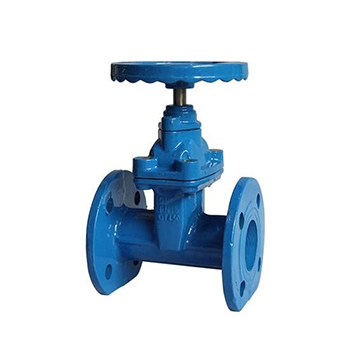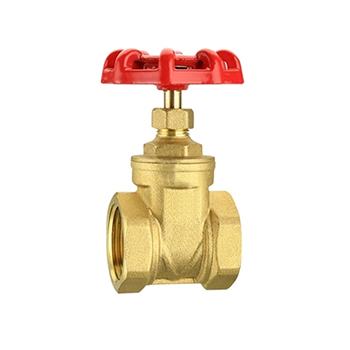What are the Types of Gate Valves?
Gate valves have become one of the most widely used valves. From urban tap water, and sewage treatment projects to oil and gas pipelines, gate valves can be seen. There are many classifications of gate valves, and different classifications are applicable to different pipeline environments. Therefore, before using gate valves, it is necessary to understand the classification of gate valves. Next, I will briefly introduce to you the types of gate valves.
Gate valve basics
The gate valve is mainly composed of the valve body, bonnet, gate plate, valve stem, valve seat, and sealing packing. It is one of the common types of isolation valves. The main purpose of the gate valve is to shut off the fluid.
There are many different structural forms of gate valves, and the types of sealing elements used in them are different. According to the structure of the sealing element, it can be divided into several different types.
Gate valves are classified according to the structure of the gate: they can be divided into parallel gate valves and wedge gate valves.
Parallel gate valve: The two sealing surfaces of the gate are parallel to each other and parallel to the vertical centerline of the valve.
Wedge gate valve: The two sealing surfaces of the gate are wedge-shaped and form a certain angle with the vertical centerline of the valve. 2" wedge gate valves can be divided into single gates, double gates, and elastic gates.
The single-plate wedge gate valve has high requirements on the accuracy of the sealing surface angle, but the processing is troublesome and the maintenance is difficult.
The double-plate wedge gate valve has low requirements on the accuracy of the angle of the sealing surface. When the sealing surface is worn, gaskets can be added to compensate. However, there are many components in this structure, which are easy to bond in viscous media, which easily affects the sealing of the valve. Gate valves are classified according to the stem structure: they can be divided into rising stem gate valves and dark stem gate valves.
Rising stem gate valve: The nut of the valve stem is located on the top of the bonnet or bracket, and the lifting of the valve stem is controlled by rotating the stem nut, thereby driving the opening and closing of the gate. The bright rod structure is beneficial to the lubrication of the valve stem, and the opening and closing of the valve can be clearly seen, which is widely used.
Dark stem gate valve: The nut of the valve stem is located inside the valve body and is in direct contact with the medium circulating in the pipeline. The gate is opened and closed by rotating the valve stem. The height of the dark pole structure remains the same, and the installation space is smaller, so it is often used in environments with limited installation space. However, the opening and closing degree of the hidden rod structure cannot be directly observed, and an opening and closing indicator needs to be installed; in addition, the valve stem thread is located in the valve body, which is directly eroded by the medium and is easily damaged.
Feature of gate valve
Light weight
The new gate valve is made of high-grade cast iron, which is about 20%-30% lighter than the traditional gate valve and is easy to install and maintain.
Flat bottom brake seat
Traditional gate valves are usually deposited in the groove at the bottom of the valve due to foreign objects such as stones, wood blocks, cement, iron filings, and sundries after washing the pipe with water, which can easily cause water leakage due to the inability to close tightly. The bottom of the elastic seat-sealed gate valve adopts the same flat-bottom design as that of the water pipe machine, which is not easy to cause debris to accumulate and makes the fluid flow unimpeded.
Overall lagging
The gate adopts high-quality rubber for internal and external rubber covering. The European rubber vulcanization technology enables the vulcanized gate to ensure accurate geometric dimensions, and the contact between the rubber and the nodular cast gate is firm and not easy to fall off.
Good elastic memory
The valve body of the gate valve is precision cast, and the precise geometric dimensions make the valve body tight without any finishing work.
Precautions
The hand wheel and the stem nut cooperate with each other and cannot be loosened. After the valve is closed, the valve stem is exposed to the top of the stem nut, and the gap between the stem and the stem nut must not vibrate significantly.
The outer circle and trapezoidal threaded hole of the stem nut must be coaxial with the nut hole and stem hole of the bonnet stem.
The installation of the packing gland shall not be tilted, the gap between the valve stem and the hole of the packing gland shall be uniform, and it shall be tightened until there is no water leakage, but it shall not be pressed too tightly.
The stuffing can be put into the stuffing chamber just right, no obvious gap can be seen, and the stuffing chamber and valve stem hole must be coaxial.
The outer diameter of the gate sealing surface should be larger than that of the valve body, the inner diameter of the gate sealing surface should be smaller than the inner diameter of the valve body sealing surface, and there should be no protrusions around the sealing surface that are higher than the sealing surface.
Before installing the gate valve, the standard of the gate valve must be carefully checked, such as whether the diameter meets the requirements for use. Pay attention to valve transportation and avoid a collision. Before installing the gate valve, the dirt in the valve body should be removed.
The gate valve can be installed directly on the pipeline and installed according to the position of use. Generally, it can be installed at any position of the pipeline, but it is also necessary to consider future operation and maintenance and choose a suitable installation position. Pay attention to sealing when installing the gate valve to prevent leakage and affect the normal operation of the pipeline.
The gate valve should always be kept clean during use. The transmission thread must be lubricated regularly. When a fault is found, stop using it immediately and find out the cause of the fault in time.
The gate valve should use the hand wheel, do not use levers or other tools, so as not to damage the valve. Turn the hand wheel clockwise to close and vice versa. Reasonable use of gate valves ensure the correct use of methods and means to protect gate valve.
For gate valves stored for a long time, regular inspections should be carried out. For the processed surfaces that are often exposed, they should be kept clean and stored neatly in a ventilated and dry place indoors. Stacking or open storage is strictly prohibited.

